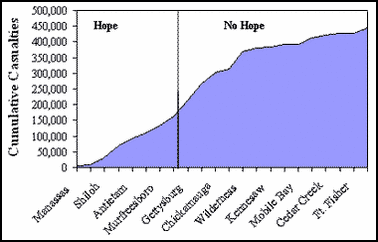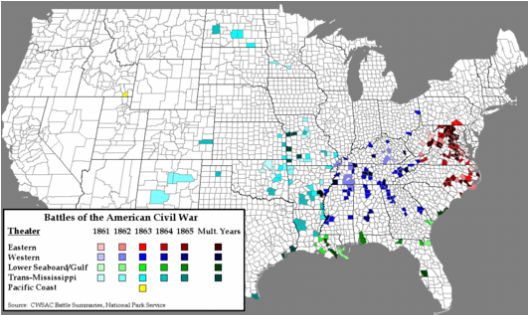The return to the South and the end of military forces
- After the battle, both armies had been decimated. Even so, the North had the advantage because they had more resources and could resupply an army better, and Lee's army was in the North trying to get out.
- Lee's loss in the battle also tainted the idea that he was invincible, hurting the morale of the Confederates.
- The day after the Battle of Gettysburg, General Ulysses S. Grant led Union forces to victory at the siege of Vicksburg.
- The victory at Vicksburg gave control of the Mississippi River to the Union, thereby dividing Confederate territory in half.
- After Lee's defeat at Gettysburg and Stonewall Jackson's Death, the military operations of the Confederacy quickly came to a halt.
- Lee officially surrendered on April 9, 1865 at the Appomattox courthouse.
- The Confederates withdrew from Northern territory after the Battle of Gettysburg. All the battles after Gettysburg were never fought as deep into the North again. The offensive campaign of the South had ended.
- The South reunited at Seminary Ridge after evacuating the town of Gettysburg, and General Robert E. Lee re-formed his men into a defensive position.
The graph to the left shows the total losses of Confederate forces throughout the war. On the x axis are various battles labeled chronologically. After Gettysburg there is a steep incline of casualties placing the Confederates losses at over 200,000. From there the amount of dead only rises. Also, the slope of the graph decreases after Lee resigns. This shows the South's loss of military ability after Gettysburg.
This image is from: http://www.atimes.com/atimes/Middle_East/EF12Ak01.html
This image is from: http://www.atimes.com/atimes/Middle_East/EF12Ak01.html


